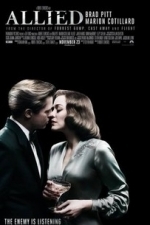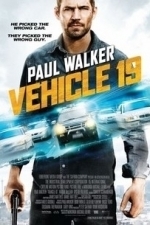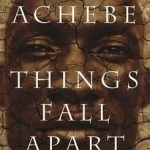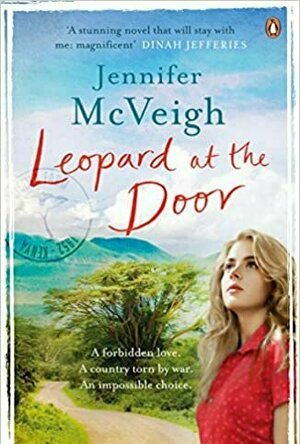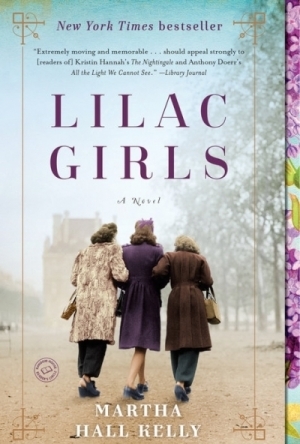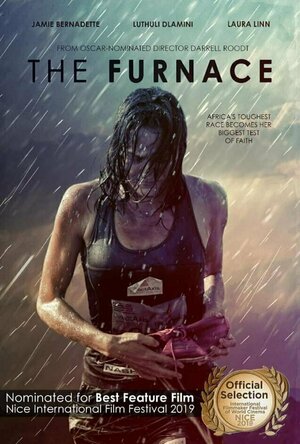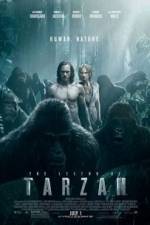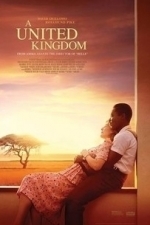Search
Search results
Gareth von Kallenbach (980 KP) rated the PlayStation 4 version of Gravel in Video Games
Jun 19, 2019
Last year at the start of PAX West; Genevieve, Joseph, and myself were invited to get a look at the pending racing game GRAVEL in a private meeting at a suite near the convention. What made this even more exciting was that the meeting took place a day before the convention opened so since we were in the area to run errands and pick up our press passes; this was a very appealing way to see a game and get the jump on our convention coverage.
I do want to say at the start that I am horrible at driving games. My preferred method of braking often is using the wall, other cars, and obstacles to redirect my vehicle or slow down, but it does not stop my appreciation for them.
GRAVEL is a very fast paced and enjoyable game that mixes online and offline racing and allows players to use and customize trucks and cars as they race on tracks and outdoor courses. Everything from the Pacific to Alaska and Africa come into play and there are even some amazingly difficult night races where you have to make your way with only your headlights to keep you on the ever changing off-road course.
I had hoped for a few more locales, but there are variations on each locale and you can expect more maps and possibly modes will come down the road.
The graphics are fantastic and playing the game on a PS4 Pro with a 4K television brought the visuals of the game into amazing focus as it was easy to become immersed in the game from the very start.
The menus do take a bit of getting used to as it was at times unclear what form of racing I was about to embark on but I was up to speed in no time.
Matchmaking was fairly easy but it did seem to match me with drivers of a far superior ability time and again which makes it hard to see anything other than a last place finish should I make one mistake on the course.
While the game may not have the depth of other racing games, I found it to be instantly engaging and very fun which is saying quite a bit considering I usually do not play many racing games. Joseph is a fan of racing games and he was able to successfully complete many of the races in our PAX West meeting with no issues and often in the top position.
In the end GRAVEL is a fun entry for those looking to dip their toes into some off road racing or for diehards, but some hardcore racers may want more depth and variety.
http://sknr.net/2018/03/10/gravel/
I do want to say at the start that I am horrible at driving games. My preferred method of braking often is using the wall, other cars, and obstacles to redirect my vehicle or slow down, but it does not stop my appreciation for them.
GRAVEL is a very fast paced and enjoyable game that mixes online and offline racing and allows players to use and customize trucks and cars as they race on tracks and outdoor courses. Everything from the Pacific to Alaska and Africa come into play and there are even some amazingly difficult night races where you have to make your way with only your headlights to keep you on the ever changing off-road course.
I had hoped for a few more locales, but there are variations on each locale and you can expect more maps and possibly modes will come down the road.
The graphics are fantastic and playing the game on a PS4 Pro with a 4K television brought the visuals of the game into amazing focus as it was easy to become immersed in the game from the very start.
The menus do take a bit of getting used to as it was at times unclear what form of racing I was about to embark on but I was up to speed in no time.
Matchmaking was fairly easy but it did seem to match me with drivers of a far superior ability time and again which makes it hard to see anything other than a last place finish should I make one mistake on the course.
While the game may not have the depth of other racing games, I found it to be instantly engaging and very fun which is saying quite a bit considering I usually do not play many racing games. Joseph is a fan of racing games and he was able to successfully complete many of the races in our PAX West meeting with no issues and often in the top position.
In the end GRAVEL is a fun entry for those looking to dip their toes into some off road racing or for diehards, but some hardcore racers may want more depth and variety.
http://sknr.net/2018/03/10/gravel/
Darren (1599 KP) rated Allied (2016) in Movies
Jun 20, 2019
Story: Allied starts as Canadian Intelligence Officer Max Vatan (Pitt) lands in Morocco to work with French Resistance Fighter Marianna Beausejour (Cotillard) as they pretend to be married as they complete their mission. The two fall in love for real and return to London to get married against the his superior Frank Heslop (Harris) opinion.
After a year of marriage Heslop comes to Max believing Marianna is indeed a spy, this leaves Max questioning, which side of the story to believe and what is the truth.
Thoughts on Allied
Characters – Max Vatan is Canadian intelligence working in Africa, highly skilled he can blend into his environment, but he does fall in love with his undercover wife. When he gets informed she could well be a spy, his life is turned upside down with doubts about what is the truth. Marianna is the French resistance fighter working with the Canadian Max as his fake wife, but she also falls in love with Max and returns to start a family with him. We don’t learn too much apart from that she is a loving wife and mother though.
Performances – Brad Pitt is good for the opening mission, you believe his every decision, but when he becomes the family man, he just doesn’t reach the levels you know he can. Marion Cotillard is good without being her breath-taking best in this role.
Story – The story here follows love and spies during World War II, we see how two people from different sides of the war fall in love and they must decide which side of the war they are supporting. This film doesn’t become as intense as it could be because seeing it from both sides could have heighted the experience and by the end it just doesn’t feel like it reaches the levels it should.
Action/Romance/War – The action during the film is tame with very little being used or looking overly real. The romance doesn’t feel whirlwind like you think it should be either, but the war side comes off strong as we see how the tension between the sides cause most of the issues in the lives.
Settings – The settings look authentic for the time, which does work well for the film.
Scene of the Movie – The truth.
That Moment That Annoyed Me – Just fizzles out in the second half of the film.
Final Thoughts – This is a war romance film that just never reaches the levels it should do, it just seems to go on and becomes one of the average films that you forget by the end.
Overall: Average and disappointing.
https://moviesreview101.com/2019/02/01/abc-film-challenge-oscar-nomination-a-allied-2016/
After a year of marriage Heslop comes to Max believing Marianna is indeed a spy, this leaves Max questioning, which side of the story to believe and what is the truth.
Thoughts on Allied
Characters – Max Vatan is Canadian intelligence working in Africa, highly skilled he can blend into his environment, but he does fall in love with his undercover wife. When he gets informed she could well be a spy, his life is turned upside down with doubts about what is the truth. Marianna is the French resistance fighter working with the Canadian Max as his fake wife, but she also falls in love with Max and returns to start a family with him. We don’t learn too much apart from that she is a loving wife and mother though.
Performances – Brad Pitt is good for the opening mission, you believe his every decision, but when he becomes the family man, he just doesn’t reach the levels you know he can. Marion Cotillard is good without being her breath-taking best in this role.
Story – The story here follows love and spies during World War II, we see how two people from different sides of the war fall in love and they must decide which side of the war they are supporting. This film doesn’t become as intense as it could be because seeing it from both sides could have heighted the experience and by the end it just doesn’t feel like it reaches the levels it should.
Action/Romance/War – The action during the film is tame with very little being used or looking overly real. The romance doesn’t feel whirlwind like you think it should be either, but the war side comes off strong as we see how the tension between the sides cause most of the issues in the lives.
Settings – The settings look authentic for the time, which does work well for the film.
Scene of the Movie – The truth.
That Moment That Annoyed Me – Just fizzles out in the second half of the film.
Final Thoughts – This is a war romance film that just never reaches the levels it should do, it just seems to go on and becomes one of the average films that you forget by the end.
Overall: Average and disappointing.
https://moviesreview101.com/2019/02/01/abc-film-challenge-oscar-nomination-a-allied-2016/
JT (287 KP) rated Vehicle 19 (2013) in Movies
Mar 10, 2020
Paul Walker can’t seem to stay away from cars at the moment, in between Fast Five and the recently released Fast and Furious 6 Walker took the lead in Vehicle 19.
Walker plays Michael Woods whose recently jumped parole and heads out to South Africa to see his girlfriend, in the hope of rekindling their relationship. Picking up a rental car, a minivan, which is hardly fast or furious, it turns out to be the wrong choice as during his journey he’s chased down by the local police for the murder of a young woman.
The film for the majority of its entirety is shot from the inside of the car, with Walker rarely stepping out of the driver’s seat as he tries to navigate his way through a city he is totally unfamiliar with. Films that capture one location need to rely on a number of things, firstly the acting has got to be top draw and secondly you’ve got to pull out the tension and hook the audience.
Phone Booth and Buried which placed its protagonists in a confined space paid off pretty well, but here Vehicle 19 struggles and almost splutters as if gasping for more fuel. The problem is the despite Walker putting in a decent performance as a man with a goal who is pushed to the edge it lacks any real bite or conviction.
For the opening twenty minutes we see him converse with his girlfriend via phone, complain he’s got the wrong rental car and try to remember which side of the road he has to drive on. It’s dull, and when you compare it with Ryan Reynolds’s opening twenty minutes in Buried where he’s confined to a 6 foot box, Vehicle 19 is way off the mark.
Relative unknown director Mukunda Michael Dewil leaves it too late, and when Woods discovers a phone and gun in the glove box as well as a bound and gagged girl in the trunk many of us have already turned the ignition off. Woods is hunted by Detective Smith, a man with a terrifying accent that leaves genuine chills down your spine, for someone who only gets a minimal amount of screen time at the end he does leave a lasting impression.
It does have its rare moments and of course Walker gets to use his driving skills to full capacity as he’s perused through the townships and city streets by police cars that you’d expect would be able to catch up with a minivan.
It’s short but not so sharp, the surrounding locations begged for so much more than what was delivered. I’d much rather have seen Walker behind the wheel of a high performance vehicle…oh wait I can!
Walker plays Michael Woods whose recently jumped parole and heads out to South Africa to see his girlfriend, in the hope of rekindling their relationship. Picking up a rental car, a minivan, which is hardly fast or furious, it turns out to be the wrong choice as during his journey he’s chased down by the local police for the murder of a young woman.
The film for the majority of its entirety is shot from the inside of the car, with Walker rarely stepping out of the driver’s seat as he tries to navigate his way through a city he is totally unfamiliar with. Films that capture one location need to rely on a number of things, firstly the acting has got to be top draw and secondly you’ve got to pull out the tension and hook the audience.
Phone Booth and Buried which placed its protagonists in a confined space paid off pretty well, but here Vehicle 19 struggles and almost splutters as if gasping for more fuel. The problem is the despite Walker putting in a decent performance as a man with a goal who is pushed to the edge it lacks any real bite or conviction.
For the opening twenty minutes we see him converse with his girlfriend via phone, complain he’s got the wrong rental car and try to remember which side of the road he has to drive on. It’s dull, and when you compare it with Ryan Reynolds’s opening twenty minutes in Buried where he’s confined to a 6 foot box, Vehicle 19 is way off the mark.
Relative unknown director Mukunda Michael Dewil leaves it too late, and when Woods discovers a phone and gun in the glove box as well as a bound and gagged girl in the trunk many of us have already turned the ignition off. Woods is hunted by Detective Smith, a man with a terrifying accent that leaves genuine chills down your spine, for someone who only gets a minimal amount of screen time at the end he does leave a lasting impression.
It does have its rare moments and of course Walker gets to use his driving skills to full capacity as he’s perused through the townships and city streets by police cars that you’d expect would be able to catch up with a minivan.
It’s short but not so sharp, the surrounding locations begged for so much more than what was delivered. I’d much rather have seen Walker behind the wheel of a high performance vehicle…oh wait I can!
Janeeny (200 KP) rated Things Fall Apart in Books
Jun 10, 2019
I was very confused by February’s ‘Penguin Reading Challenge’, as I don’t think I got one. Their February newsletter did recommend ‘Pride and Prejudice’ as a valentine read so potentially that may have been my classic recommendation for the month, however I’ve already read that one so I decided this month to go for January’s second recommendation of Chinua Achebe’s ‘Things fall apart’.
I don’t really know how to summarise this book without giving a lot away so I’m going to rely on Amazon –
Okonowo is the greatest warrior alive. His fame has spread like a bushfire in West Africa and he is one of the most powerful men of his clan.
But he also has a fiery temper. Determined not to be like his father, he refuses to show weakness to anyone – even if the only way he can master his feelings is with his fists. When outsiders threaten the traditions of his clan, Okonowo takes violent action. Will the great man’s dangerous pride eventually destroy him?
Again a Classic that did actually engross me. At the risk of sounding like a complete heel I was expecting to be lectured to by this book. Usually with Historical literature books of such high acclaim we encounter a lot of hidden and profound messages about our place in the world and how we treat others and the story can feel a bit dry. Also, with the other Historical fiction based in other countries I’ve read, I’ve appreciated the story, but they have essentially been based around problems exclusive to that era and culture, so it’s not really something I can relate to.
So oddly enough this little book set within a Nigerian tribe in the 1890s was actually quite relatable. Ok so maybe not many people can relate to a situation where you and a group of other men lead your foster son to a dark forest and kill him, but we can relate to making hard choices in life and letting down the ones we love.
You know as soon as you meet Okonowo that things are not going to go well for him, he is a prideful man quick to anger. He mistreats his wives and has high expectations of his children, and his intentions whilst well-meaning for his family are also misguided. Okonowo lives in a very superstitious village, and you can see that, after Okonowo does something that a close friend warns him against, that things will start to go bad from there. Things do not end well for Okonowo, as he doesn’t seem to learn or heed the warnings around him, but in the end you do start to sympathise with him a bit.
I think the best way to summarise the events in ‘Things fall apart’ is that whilst Okonowo’s problems are steered by his tribe’s beliefs and superstitions they are in essence problems that are relatable around the world.
I don’t really know how to summarise this book without giving a lot away so I’m going to rely on Amazon –
Okonowo is the greatest warrior alive. His fame has spread like a bushfire in West Africa and he is one of the most powerful men of his clan.
But he also has a fiery temper. Determined not to be like his father, he refuses to show weakness to anyone – even if the only way he can master his feelings is with his fists. When outsiders threaten the traditions of his clan, Okonowo takes violent action. Will the great man’s dangerous pride eventually destroy him?
Again a Classic that did actually engross me. At the risk of sounding like a complete heel I was expecting to be lectured to by this book. Usually with Historical literature books of such high acclaim we encounter a lot of hidden and profound messages about our place in the world and how we treat others and the story can feel a bit dry. Also, with the other Historical fiction based in other countries I’ve read, I’ve appreciated the story, but they have essentially been based around problems exclusive to that era and culture, so it’s not really something I can relate to.
So oddly enough this little book set within a Nigerian tribe in the 1890s was actually quite relatable. Ok so maybe not many people can relate to a situation where you and a group of other men lead your foster son to a dark forest and kill him, but we can relate to making hard choices in life and letting down the ones we love.
You know as soon as you meet Okonowo that things are not going to go well for him, he is a prideful man quick to anger. He mistreats his wives and has high expectations of his children, and his intentions whilst well-meaning for his family are also misguided. Okonowo lives in a very superstitious village, and you can see that, after Okonowo does something that a close friend warns him against, that things will start to go bad from there. Things do not end well for Okonowo, as he doesn’t seem to learn or heed the warnings around him, but in the end you do start to sympathise with him a bit.
I think the best way to summarise the events in ‘Things fall apart’ is that whilst Okonowo’s problems are steered by his tribe’s beliefs and superstitions they are in essence problems that are relatable around the world.
BookInspector (124 KP) rated Leopard at the Door in Books
Sep 24, 2020
More reviews at https://bbookinspector.wordpress.com
My favourite genre to read normally is mystery, crime or thrillers, but I try to choose different genres from time to time. I need to rest from investigations and murders, that’s where historical fiction, YA and other books come in. This book is no exception; I needed something to clear my mind, and it really done the job.
Let me begin by saying, that I loved the environment used in this book. Author portrayed the surroundings and places in this book with great detail, and made me actually feel the African spirit. So, all her travels through Africa, really helped her to describe what she felt to the reader.
The main character in this book was Rachel, and she was the one to share her life with a reader. This novel had a huge variety of very diverse characters, some of them positive and dear to the heart, and some of them really negative, which made me really angry about them. Unfortunately, I did not have any favourite character in this book, as I felt they were not fully developed and opened up to the reader. I would’ve liked to read different perspectives and have more insight into different personalities. Even though I really tried to like Rachel’s rebellious views and kind heart, I think some of her decisions were really silly and disappointing.
The narrative of this novel starts in 1952, when British Empire is on a verge of collapsing, and Kenya wishes its independence. I absolutely adored all the details about Mau Mau, their ideology and ways of action. I loved Michael’s thoughts about war and his country’s independence. I think, this book was really well researched and the whole spirit of the book was shared just gorgeously. The whole story was flowing very smoothly, with some turns and twists, which kept me interested. There was a great love story going on in this book, but I would’ve liked it to be a bit more passionate than it was. Author discussed some interesting topics in this book, such as: Life after mother’s death and relationship with a stepmother; feelings, when you don’t have anyone to turn to; love and betrayal.
The writing style of this novel was not difficult to read, but it contains some African words, which were explained at the end of the book. (If you read it on Kindle, it’s not very helpful) The chapters of this book have decent length, but it might drag a little, because there is not much action going on in this novel. The ending was quite interesting and done the justice to the book and Rachel, but still left me questioning about “What happened to Michael?” So, overall, I actually enjoyed this story of wish for independence, unexpected love, family difficulties and betrayal, and I would recommend immersing yourself into this beautiful Kenyan setting.
Was given this book by publisher and NetGalley for honest review.
My favourite genre to read normally is mystery, crime or thrillers, but I try to choose different genres from time to time. I need to rest from investigations and murders, that’s where historical fiction, YA and other books come in. This book is no exception; I needed something to clear my mind, and it really done the job.
Let me begin by saying, that I loved the environment used in this book. Author portrayed the surroundings and places in this book with great detail, and made me actually feel the African spirit. So, all her travels through Africa, really helped her to describe what she felt to the reader.
The main character in this book was Rachel, and she was the one to share her life with a reader. This novel had a huge variety of very diverse characters, some of them positive and dear to the heart, and some of them really negative, which made me really angry about them. Unfortunately, I did not have any favourite character in this book, as I felt they were not fully developed and opened up to the reader. I would’ve liked to read different perspectives and have more insight into different personalities. Even though I really tried to like Rachel’s rebellious views and kind heart, I think some of her decisions were really silly and disappointing.
The narrative of this novel starts in 1952, when British Empire is on a verge of collapsing, and Kenya wishes its independence. I absolutely adored all the details about Mau Mau, their ideology and ways of action. I loved Michael’s thoughts about war and his country’s independence. I think, this book was really well researched and the whole spirit of the book was shared just gorgeously. The whole story was flowing very smoothly, with some turns and twists, which kept me interested. There was a great love story going on in this book, but I would’ve liked it to be a bit more passionate than it was. Author discussed some interesting topics in this book, such as: Life after mother’s death and relationship with a stepmother; feelings, when you don’t have anyone to turn to; love and betrayal.
The writing style of this novel was not difficult to read, but it contains some African words, which were explained at the end of the book. (If you read it on Kindle, it’s not very helpful) The chapters of this book have decent length, but it might drag a little, because there is not much action going on in this novel. The ending was quite interesting and done the justice to the book and Rachel, but still left me questioning about “What happened to Michael?” So, overall, I actually enjoyed this story of wish for independence, unexpected love, family difficulties and betrayal, and I would recommend immersing yourself into this beautiful Kenyan setting.
Was given this book by publisher and NetGalley for honest review.
The Chocolate Lady (94 KP) rated Lilac Girls in Books
Oct 5, 2020
This novel is very nicely written, with interesting characters. In particular, the protagonist Caroline is beautifully formed, with a life that is fascinating for those who know little about how Americans tried to help those who became unwitting refugees in the US after Hitler invaded their homelands. However, we must remember that Holocaust novels are a dime a dozen. This is why I was hoping that this novel would be different, particularly since the blurb for this book talks about Christine and her helping two survivors of the women's camp Ravensbruck. Unfortunately, the detailed information about the two other women in this story, and their introduction to Ravensbruck was, in my opinion, too much back-story. Although retelling the grim and gory ways that the Nazis treated their prisoners is a necessary evil, I somehow felt that this book included these scenes only to evoke pity for these characters. I don't want to pity characters, I want to have empathy for them, to care about them, and the author let me down with this.
In addition - and I hope this doesn't sound racist or snobbish - as a Jew, I have a hard time with Holocaust novels that seem to outwardly ignore how the Nazis treated the Jews, and only focuses on the other "undesirables." I realize that the Nazis didn't only kill Jews, but they were their primary target, and to avoid that altogether was disingenuous, to say the least. However, I was glad that this book didn't focus on any overtly Christian themes, even though I believe that there is a market for Holocaust stories within the Christian Fiction genre (see my review of the novel The Butterfly and the Violin by Kristy Cambron here http://drchazan.blogspot.com/2014/07/beauty-out-of-ugliness.html for more on my feelings about this).
Furthermore, the only Jewish reference I found in this novel was a passing reference to visiting the Ghetto and a remembrance of eating a Hanukkah delicacy. Unfortunately, the author didn't do her research properly, and the character said she remembered eating a type of doughnut that the Jewish bakers made for the holiday. Those doughnuts - known as "sufganiot" were never part of any Eastern European Hanukkah celebration at that time. In fact, sufganiot that are popular among Jews today, come from the Jews of North Africa and Arab countries. The word, sufganiot, comes from the Arabic and Hebrew words that mean sponge. While Jews in Poland did make something similar, their popularity as a particularly Hanukkah delicacy among Easter European Jews only coincided after Ashkenazi and Mizrahi Jews came together in Israel (i.e., post-1948). All of this is why I cannot give this book a rating of more than two and a half stars out of five, but I'm certain that it will find a much more sympathetic audience among non-Jewish readers.
In addition - and I hope this doesn't sound racist or snobbish - as a Jew, I have a hard time with Holocaust novels that seem to outwardly ignore how the Nazis treated the Jews, and only focuses on the other "undesirables." I realize that the Nazis didn't only kill Jews, but they were their primary target, and to avoid that altogether was disingenuous, to say the least. However, I was glad that this book didn't focus on any overtly Christian themes, even though I believe that there is a market for Holocaust stories within the Christian Fiction genre (see my review of the novel The Butterfly and the Violin by Kristy Cambron here http://drchazan.blogspot.com/2014/07/beauty-out-of-ugliness.html for more on my feelings about this).
Furthermore, the only Jewish reference I found in this novel was a passing reference to visiting the Ghetto and a remembrance of eating a Hanukkah delicacy. Unfortunately, the author didn't do her research properly, and the character said she remembered eating a type of doughnut that the Jewish bakers made for the holiday. Those doughnuts - known as "sufganiot" were never part of any Eastern European Hanukkah celebration at that time. In fact, sufganiot that are popular among Jews today, come from the Jews of North Africa and Arab countries. The word, sufganiot, comes from the Arabic and Hebrew words that mean sponge. While Jews in Poland did make something similar, their popularity as a particularly Hanukkah delicacy among Easter European Jews only coincided after Ashkenazi and Mizrahi Jews came together in Israel (i.e., post-1948). All of this is why I cannot give this book a rating of more than two and a half stars out of five, but I'm certain that it will find a much more sympathetic audience among non-Jewish readers.
Darren (1599 KP) rated The Furnace (2019) in Movies
Oct 14, 2019
Characters – Mary starts this film married and about to go on a honeymoon the pair had been dreaming off, this goes in an instant, leaving her needing an oxygen tank to get through the day, with any hopes of running dashed. Angry at the world, she starts to close off, finding any attempts at returning to her passion ending in hospital trips, until she meets Coffin, here she learns about faith and new technology to overcome her odds to compete in the race that was her honeymoon plan, one that is a test for even the toughest runners in the world. Coffin is a gravedigger in America, even though he is trained as a doctor back in Africa, he offers to help Mary get back to her former self, teaching her to pace herself, preparing her for the impossible sounding race. He must watch from the side lines, with hope that she will make it through each stage of the race. Raphaella is a fellow runner that Mary meets along the way, one to help support her over the course of the journey.
Performances – Jamie Bernadette steps away from the action horror roles we have seen her in recently for a much more serious role, one that does play into her strengths, she deals with the athletic demand of the performance with ease, while bringing the emotional impact of her character’s journey through the film. Luthuli Dlamini does a wonderful job in his role too bringing the calmness to help make Mary strong through the film.
Story – The story here follows one woman that loses everything she had a dreamt off until she finds her faith and pushes herself to get back on the track and complete the race she was meant to do with her husband. This is a story that shows the inspiration of wanting to overcome tragedy and finding a way to achieve this in a world you wouldn’t normal consider. We do get a normal montage of training, while a large part of the story follows the race being competed in. we do get to see just how much needed to be overcome, though it could have given us more of a time frame and just what the injury Mary had, like how likely it is to overcome, or would it be something she was meant to be living with for the rest of her life.
Settings – The film uses the settings to show us just how her life changes in America, while it does get the beauty shots of the African wild reserve seeing the different animals around area.
Scene of the Movie – The race final leg.
That Moment That Annoyed Me – Not getting a full look at the time frame.
Final Thoughts – This is an inspiring story of overcoming tragedy to get back to the former strength, with powerful performances throughout.
Overall: Inspiring Throughout.
Performances – Jamie Bernadette steps away from the action horror roles we have seen her in recently for a much more serious role, one that does play into her strengths, she deals with the athletic demand of the performance with ease, while bringing the emotional impact of her character’s journey through the film. Luthuli Dlamini does a wonderful job in his role too bringing the calmness to help make Mary strong through the film.
Story – The story here follows one woman that loses everything she had a dreamt off until she finds her faith and pushes herself to get back on the track and complete the race she was meant to do with her husband. This is a story that shows the inspiration of wanting to overcome tragedy and finding a way to achieve this in a world you wouldn’t normal consider. We do get a normal montage of training, while a large part of the story follows the race being competed in. we do get to see just how much needed to be overcome, though it could have given us more of a time frame and just what the injury Mary had, like how likely it is to overcome, or would it be something she was meant to be living with for the rest of her life.
Settings – The film uses the settings to show us just how her life changes in America, while it does get the beauty shots of the African wild reserve seeing the different animals around area.
Scene of the Movie – The race final leg.
That Moment That Annoyed Me – Not getting a full look at the time frame.
Final Thoughts – This is an inspiring story of overcoming tragedy to get back to the former strength, with powerful performances throughout.
Overall: Inspiring Throughout.
Movie Metropolis (309 KP) rated The Legend of Tarzan (2016) in Movies
Jun 11, 2019
CPR Needed
As tends to be the case with Hollywood, studios pay very close attention to their rivals release schedules, eyeing up potential competition to pit their films against, maxing box-office returns in the process.
And when Disney announced they were rebooting The Jungle Book in March this year, Warner Bros quickly responded with another jungle-themed film; The Legend of Tarzan. But does this interpretation on the classic character swing or fall?
It’s been nearly a decade since Tarzan (Alexander Skarsgård), aka John Clayton III, left Africa to live in Victorian England with his wife Jane (Margot Robbie). Danger lurks on the horizon as Leon Rom (Christoph Waltz), a treacherous envoy for King Leopold, devises a scheme that lures the couple and friend George Williams (Samuel L Jackson) to the Congo. Rom plans to capture Tarzan and deliver him to an old enemy in exchange for diamonds. When Jane becomes a pawn in his devious plot, Tarzan must return to the jungle to save the woman he loves.
Directed by David Yates (Harry Potter & the Deathly Hallows), Legend of Tarzan features committed performances from its lead cast, immersive scenery and impressive special effects, but all of the glitz can’t save a film that plods along at a dreadful pace. Not since Peter Jackson’s King Kong has there been a movie that wastes so much of its opening act.
Alexander Skarsgård is likeable and commanding as the titular character, but lacks enough acting prowess to tackle the deeper, more emotional side that writers Adam Cozad and Craig Brewer have brought to the table here. Therefore, the scenes featuring a solo Tarzan suffer somewhat and Samuel L Jackson feels wasted in a poorly written and half-hearted role.
It is in Margot Robbie and Christoph Waltz that we find the film’s saving graces. Their characters leap off the screen with Waltz in particular being a highlight throughout. It’s unfortunate that one of our greatest living actors is lambasted with poor dialogue however, though the script just about keeps him afloat.
David Yates brings a similar filming style here to that of his foray into Harry Potter. The action is confidently filmed, but he avoids the use of shaky-cam that many directors seem to find appealing nowadays. The CGI is on the whole very good, especially in the finale which is breath-taking to watch.
It’s just a shame the rest of the film is such a drag. The first hour is incredibly poorly paced with very brief, albeit well-filmed, action sequences not doing enough to brighten Legend of Tarzan up. Elsewhere, the use of flashbacks is at first a decent way of giving the audience some exposition, but after the tenth one, they’re a nuisance.
Overall, The Legend of Tarzan does a lot more with its iconic character than other films have done, but that doesn’t excuse its poor pacing. Thankfully, the exciting finale lifts the final act above the standard of the first hour, and commanding performances from all the cast sustain interest just about enough to see it through to the end.
https://moviemetropolis.net/2016/07/07/cpr-needed-the-legend-of-tarzan-review/
And when Disney announced they were rebooting The Jungle Book in March this year, Warner Bros quickly responded with another jungle-themed film; The Legend of Tarzan. But does this interpretation on the classic character swing or fall?
It’s been nearly a decade since Tarzan (Alexander Skarsgård), aka John Clayton III, left Africa to live in Victorian England with his wife Jane (Margot Robbie). Danger lurks on the horizon as Leon Rom (Christoph Waltz), a treacherous envoy for King Leopold, devises a scheme that lures the couple and friend George Williams (Samuel L Jackson) to the Congo. Rom plans to capture Tarzan and deliver him to an old enemy in exchange for diamonds. When Jane becomes a pawn in his devious plot, Tarzan must return to the jungle to save the woman he loves.
Directed by David Yates (Harry Potter & the Deathly Hallows), Legend of Tarzan features committed performances from its lead cast, immersive scenery and impressive special effects, but all of the glitz can’t save a film that plods along at a dreadful pace. Not since Peter Jackson’s King Kong has there been a movie that wastes so much of its opening act.
Alexander Skarsgård is likeable and commanding as the titular character, but lacks enough acting prowess to tackle the deeper, more emotional side that writers Adam Cozad and Craig Brewer have brought to the table here. Therefore, the scenes featuring a solo Tarzan suffer somewhat and Samuel L Jackson feels wasted in a poorly written and half-hearted role.
It is in Margot Robbie and Christoph Waltz that we find the film’s saving graces. Their characters leap off the screen with Waltz in particular being a highlight throughout. It’s unfortunate that one of our greatest living actors is lambasted with poor dialogue however, though the script just about keeps him afloat.
David Yates brings a similar filming style here to that of his foray into Harry Potter. The action is confidently filmed, but he avoids the use of shaky-cam that many directors seem to find appealing nowadays. The CGI is on the whole very good, especially in the finale which is breath-taking to watch.
It’s just a shame the rest of the film is such a drag. The first hour is incredibly poorly paced with very brief, albeit well-filmed, action sequences not doing enough to brighten Legend of Tarzan up. Elsewhere, the use of flashbacks is at first a decent way of giving the audience some exposition, but after the tenth one, they’re a nuisance.
Overall, The Legend of Tarzan does a lot more with its iconic character than other films have done, but that doesn’t excuse its poor pacing. Thankfully, the exciting finale lifts the final act above the standard of the first hour, and commanding performances from all the cast sustain interest just about enough to see it through to the end.
https://moviemetropolis.net/2016/07/07/cpr-needed-the-legend-of-tarzan-review/
Darren (1599 KP) rated A United Kingdom (2017) in Movies
Jun 20, 2019
Story: A Untied Kingdom starts in 1947 England where Prince Seretse Khama (Oyelowo) of Bechuanaland (known today as Botswana) is in England studying law, he meets file clerk Ruth Williams (Pike) and the two fall in love.
With tension between Bechuanaland and South Africa high the idea of the soon to be King marrying a white woman would be unheard off. The British government doesn’t want him to become king and Seretse own family don’t want him to become king if he stays with Ruth. With the racial divide still going strong, Seretse pushed for equality over anything else, so he can unite his kingdom when he becomes king.
Thoughts on A United Kingdom
Characters – Seretse Khama is the prince of Bechuanaland he has been studying law in England to prepare for his time as king, he falls in love a white woman in Ruth Williams which throws tensions from his family, government in the air and to prove his love is more important than his traditions and bring the equality between the races together. Ruth Williams is an English clerk whose family has been working to teach Christianity to Africans, she meets and falls in love with Seretse and goes against everyone else’s desires and marries him. Rufus Lancaster is the British liaison in Bechuanaland who leads the opposition from the land, which only shows us just how the English were over controlling.
Performances – David Oyelowo is wonderful in the leading role, showing us once again that he can lead any movie he wants too. Rosamund Pike shines to showing everyone that she can handle to calm roles after the psycho ones in Gone Girl. The rest of the cast are wonderful even if the British characters are as stuck up as you would imagine them to be.
Story – The story follows the lives of King Seretse who marries an English white woman which puts the balance between the racial tension in his home land and British rule. We learn a lot from this movie, because we see how the country was being controlled from outside forces that only saw them as a piece of land. There is a lot to take in and the history lesson about this union that created a chance in the land.
Biopic/Romance – What King Seretse and his wife Ruth achieved for Botswana was incredible and this shows us how their love drove them to achieve this change.
Settings – The settings show us the high society British look at an African country that was following its own traditions to become the independent from this style of rule.
Scene of the Movie – Speech to the ‘tribe’ as the British called them.
That Moment That Annoyed Me – Knowing the English were this shallow.
Final Thoughts – This is a good look at how the world was once ruled by people who believe they are in the right to control countries affairs and how their union would change everything.
Overall: History is always worth learning.
https://moviesreview101.com/2019/05/21/abc-film-challenge-biopics-u-a-united-kingdom-2016/
With tension between Bechuanaland and South Africa high the idea of the soon to be King marrying a white woman would be unheard off. The British government doesn’t want him to become king and Seretse own family don’t want him to become king if he stays with Ruth. With the racial divide still going strong, Seretse pushed for equality over anything else, so he can unite his kingdom when he becomes king.
Thoughts on A United Kingdom
Characters – Seretse Khama is the prince of Bechuanaland he has been studying law in England to prepare for his time as king, he falls in love a white woman in Ruth Williams which throws tensions from his family, government in the air and to prove his love is more important than his traditions and bring the equality between the races together. Ruth Williams is an English clerk whose family has been working to teach Christianity to Africans, she meets and falls in love with Seretse and goes against everyone else’s desires and marries him. Rufus Lancaster is the British liaison in Bechuanaland who leads the opposition from the land, which only shows us just how the English were over controlling.
Performances – David Oyelowo is wonderful in the leading role, showing us once again that he can lead any movie he wants too. Rosamund Pike shines to showing everyone that she can handle to calm roles after the psycho ones in Gone Girl. The rest of the cast are wonderful even if the British characters are as stuck up as you would imagine them to be.
Story – The story follows the lives of King Seretse who marries an English white woman which puts the balance between the racial tension in his home land and British rule. We learn a lot from this movie, because we see how the country was being controlled from outside forces that only saw them as a piece of land. There is a lot to take in and the history lesson about this union that created a chance in the land.
Biopic/Romance – What King Seretse and his wife Ruth achieved for Botswana was incredible and this shows us how their love drove them to achieve this change.
Settings – The settings show us the high society British look at an African country that was following its own traditions to become the independent from this style of rule.
Scene of the Movie – Speech to the ‘tribe’ as the British called them.
That Moment That Annoyed Me – Knowing the English were this shallow.
Final Thoughts – This is a good look at how the world was once ruled by people who believe they are in the right to control countries affairs and how their union would change everything.
Overall: History is always worth learning.
https://moviesreview101.com/2019/05/21/abc-film-challenge-biopics-u-a-united-kingdom-2016/

